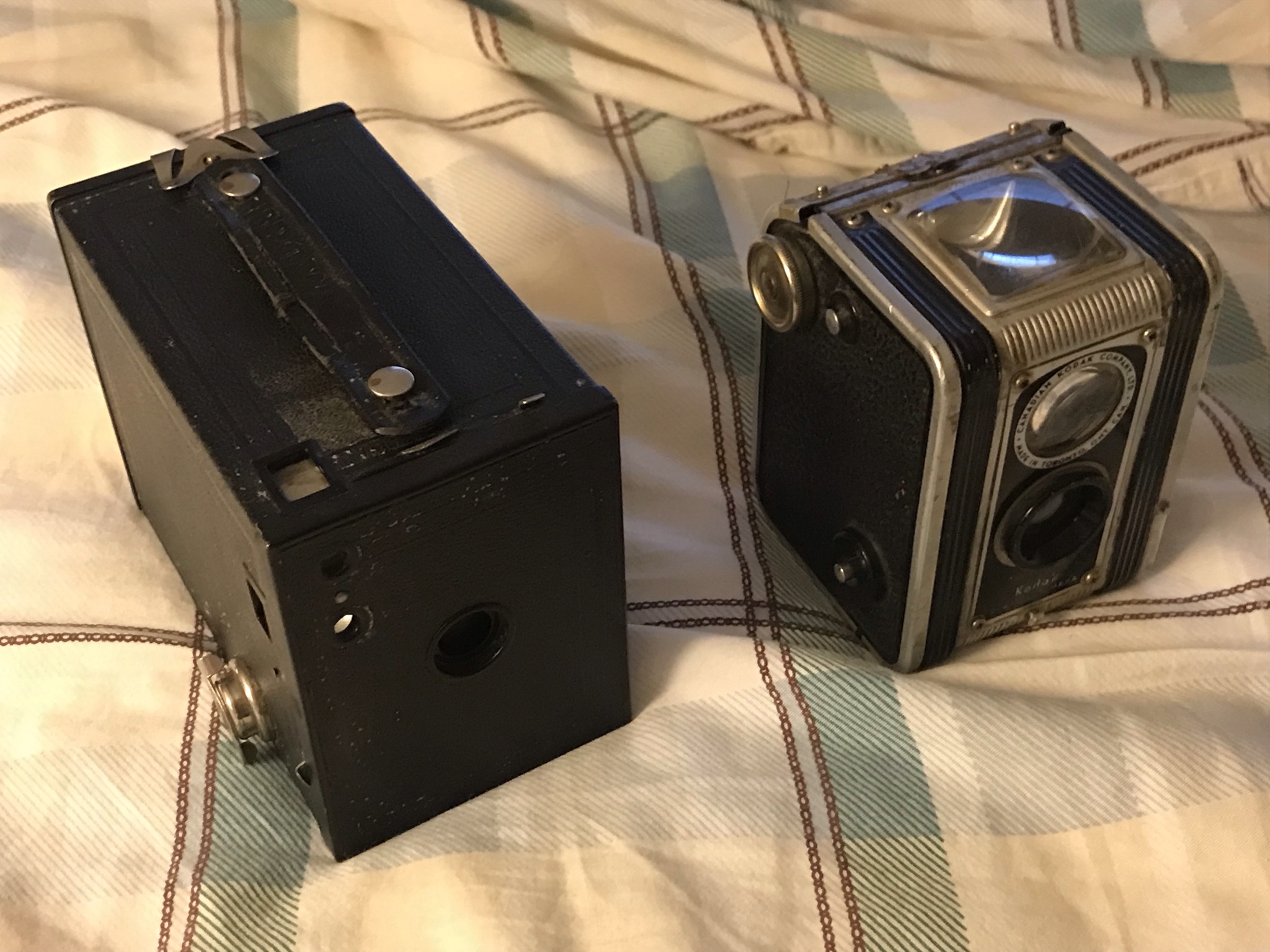Vintage Kodak Cameras
2022/01/27
Haha another camera post, I'm starting to see a pattern here
Most of my cameras could be considered retro, or even vintage. But the two cameras I just picked up are definitely vintage. Like, we're talking one-hundred-year-old vintage. The kind of stuff where most people involved in its production and intended use are now dead. Which is probably why they ended up for sale for next to nothing in the thrift stores where I got them.

On the right was my first find of the haul, a Kodak Duaflex made in Toronto. I frequent a local hospice thrift store in somewhat morbid hopes to find good deals. I had picked up some glassware, CDs, and expired film from there before, and I visit there twice a week as I do the other thrift stores on my route (trust me, that habit bleeds my money dry and I'm only hanging on thanks to a very generous editing client). By this point I'm a known regular, so on my most recent visit the nice volunteers running the place gave me a 90% discount on the Duaflex that had been sitting there for a month. I paid them a grand total of five dollars and thanked them profusely, and now it is on proud display on my vintage technology shelf. And it does make a great display piece. Its bold, angular lines are remniscient of an Art Deco aesthetic, even though it was produced between (according to a quick online search) December 1947 - September 1950. Its twin lens construction presents a timeless look, as does its waist-level viewfinder. However, apart from looks, it doesn't have too much going for it. It uses the obsolete 620 format, and while I do have enough 620 spools to respool 120 film for use in it, I wouldn't have much good reason. The Duaflex has only one speed——1/45th a second. The only other shutter option is bulb, and it also has fixed focus and aperture. I might run a roll or two of respooled expired Kentmere panchro through it, but anything like Portra is out of the question. There was a roll of exposed Belgian panchro film in there, which I've sent off to the local lab to process. I'll post the results in a week or two once it comes back.
On the left, is the real deal. It is a Kodak Brownie No.2 Model F, which I found for sale at Salvation Army bundled with a roll of Ilford XP2 for 20 dollars. I nabbed it right away since it would have been a good deal for the film alone, and I also wanted to get into medium format photography. Apart from a disintegrating handle, it is in remarkably good shape, and had likely already seen regular maintenance and/or use long past its intended lifespan. Its design, like the Duaflex, is also very simple compared to later film cameras. However, it has three aperture options (f11, f16, f22) and two viewfinders to easily shoot in portrait and landscape mode, and accepts modern 120 film for 8 6x9 exposures per roll. In fact, it was one of the first cameras to use 120 film and was instrumental in the format's success. So unlike my other early 20th century cameras, it is actually useable without messing with film. As it was manufactured around 1924, it feels quite surreal doing photography with a century-old device, and as someone who puts just as much thought into the tools of my art as I do my art, it has been one of my favorite photography experiences so far. Who could have thought that a hundred years after the Brownie came out, someone would still be wandering the streets and taking photos with it? It is, admittedly, not the best medium format camera. Compared to most other options, it actually straight-up sucks. Not only is its lens a puny knob of worn glass, but its mechanisms are limited to broad daylight medium distance/landscape photography, and its form factor makes it difficult to carry around in everyday situations. However, I feel it is a good cheap entry point for 120 film photography, and a great piece of history. Stay posted for results!
